Although Valencia’s Fallas are famous for their monuments, parades, and fireworks (check out the Fallas Calendar to ensure you don’t miss anything), it’s also a unique opportunity to explore valencian cuisine. The Fallas season brings special culinary delights, both for the traditional treats prepared during these festivities and for the many visitors eager to discover authentic valencian flavors. Let’s dive in! Prepare to taste Valencia Fallas 2025!
The iconic Fallas sweet: ‘Bunyols de carabassa’
Known in valencian as ‘Bunyols de carabassa’, these pumpkin fritters are not your typical doughnuts. They are fluffy, golden, fried delicacies sprinkled with sugar, often enjoyed with a cup of warm chocolate for dipping.
Throughout the city streets, you’ll find numerous stalls offering churros, porras, and fritters. While all are delicious, the most authentic treat of the Fallas is undoubtedly the pumpkin fritter, crafted with fresh local pumpkin. You can identify them easily by their orange color and enticing aroma.
As locals, we’d like to recommend some standout places to try them. However, be prepared for another Fallas tradition: around 11 a.m. or 6 p.m., the demand for these sweets peaks, adding to the festive buzz in the city.
Churrería Casa Piloto
Buñolería Churrería El Contraste (Our favourite)
Horchatería Fabián
Extra: Figues albardaes
Another traditional sweet making a slight comeback during the Fallas is ‘figues albardaes’ or fig fritters. These delightful bites combine a piece of dehydrated fig encased in a pumpkin fritter batter—an irresistible fusion of flavors rooted deeply in valencian and Fallera culture.
However, finding this culinary gem is a bit more challenging, as it’s not as widely available as ‘bunyols de carabassa’. To help you out, here’s one spot where a temporary stand is usually set up to offer this unique treat:
Eating on the road: ‘entrepans’ or sandwiches
Yes, sandwiches are a staple of valencian culture, especially during Fallas. At almost any bar or restaurant, you’ll find the option to order an ‘entrepà’ (in valencian) to eat there or take away. While you can customize your sandwich with nearly anything, here are some of the most typical and beloved combinations:
- Almussafes: pork sobrasada, fried onion, and cheese.
- Blanc i negre: sausage and blood sausage.
- Brascada: beef fillet, fried onion, and grilled Serrano ham.
- Sépia: cuttlefish with allioli, mayonnaise, or ‘picaeta’ (a mix of garlic, parsley, and olive oil).
- Cavall: horse meat with tender garlic.
- Faves amb llonganisses: broad beans with sausages.
- Truita: omelette, usually made with potatoes, though variations with broad beans, spinach, or spring garlic are common.
And the true king of Valencian sandwiches and our favorite:
🙌 CHIVITO 🙌
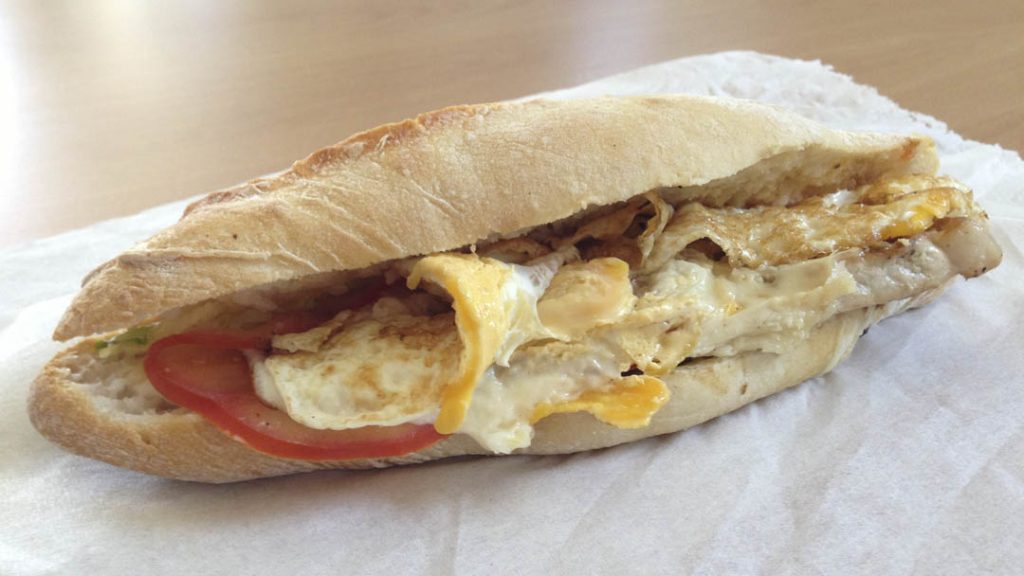
Chivito – Wikimedia // Mikespanish
This hearty sandwich includes grilled pork loin, bacon, cheese, tomato, lettuce, a fried egg, and mayonnaise. You can also try a variation with chicken breast instead of pork, known as Pollito (small chicken). We highly recommend you give it a try.
The international Paella
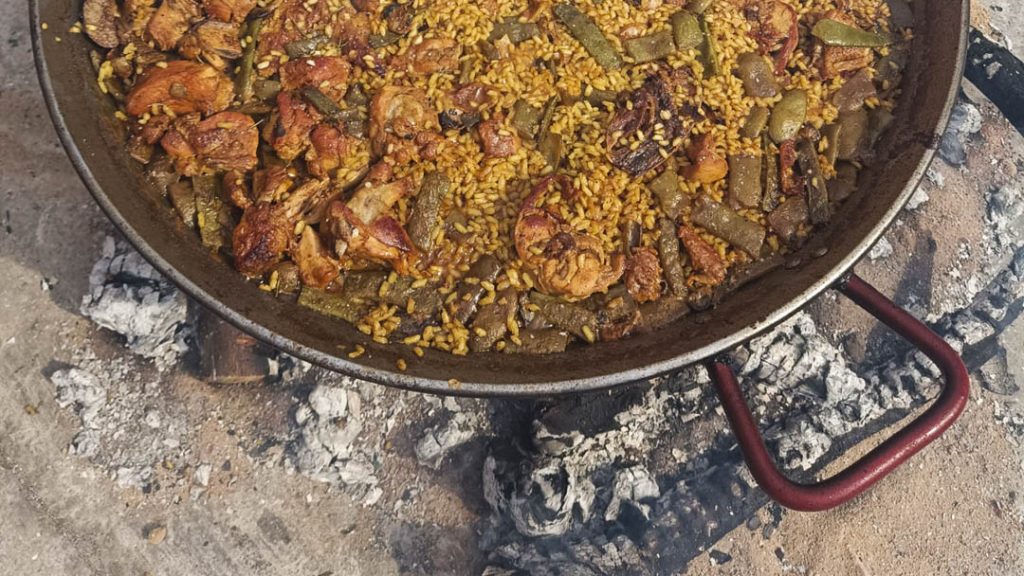
While paella is globally recognized as the most iconic valencian dish, it’s not exclusively tied to Fallas. However, as a dish for gatherings with family and friends, it is widely enjoyed during this festive period.
Beware of tourist traps! A truly authentic valencian paella consists of rice, chicken, rabbit, and vegetables. Seafood paellas are also traditional, but mixed versions (meat and seafood) or those with chorizo are far from the original recipe.
The best option? If you’re lucky, join locals who cook it at home or Fallas. Otherwise, check out two restaurants and a takeaway spot we personally recommend for authentic, high-quality paella.
El Sequer de Tonica
Restaurante Levante Valencia
Comidas Garrido
Refreshing Orxata
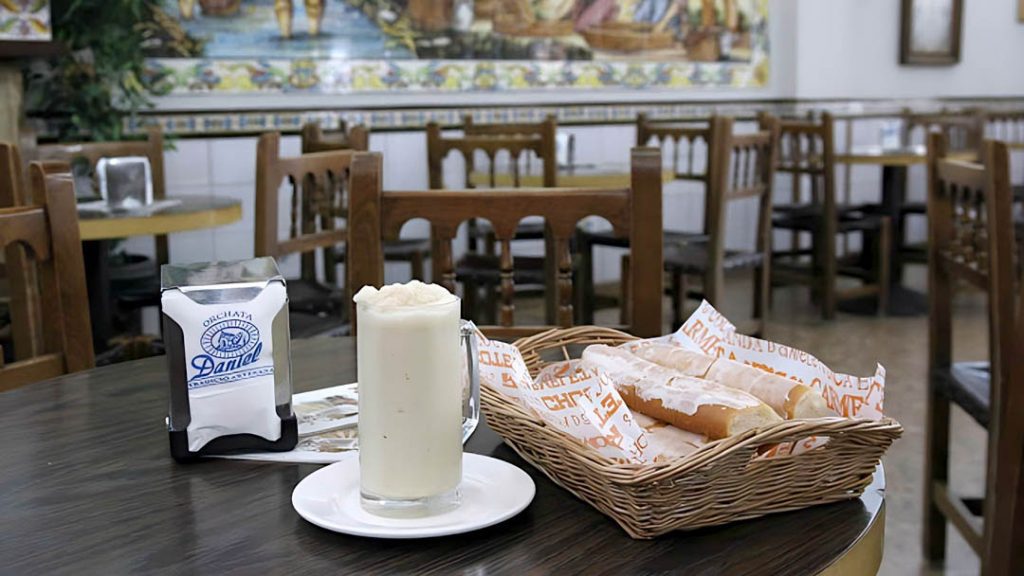
Orchatería Daniel
This refreshing drink, made from tiger nuts, isn’t exclusive to Fallas. While it’s most popular in summer to combat the valencian heat, horchata is enjoyed year-round, and we highly recommend trying it during your visit to Valencia. It is usually ordered with fartons, a typical sweet that is dipped in orxata.
Many of the spots we recommend for fritters also serve quality orxata, but for a truly authentic experience, visit one of these renowned horchaterías in nearby Alboraia, where tiger nuts are traditionally grown:
Horchatería Vida
Horchatería Daniel
L’esmorzar, a valencian tradition
L’esmorzar, meaning ‘lunch’ in valencian, is not your typical midday meal. It’s a hearty sandwich served with a snack (like peanuts or olives), a drink, and coffee—all at a reduced price, typically between €6 and €12.
This tradition originated with farmers from the Horta region, who paused mid-morning to recharge. Today, l’esmorzar remains a key part of valencian social culture, especially on weekends. Look for ‘esmorzar’ or ‘almuerzo’ signs at bars and restaurants and make sure to try it—but arrive hungry!
Here is a link if you want to delve deeper into the world of breakfast: #laculturadelalmuerzo.
The Cremaet: A must-try coffee
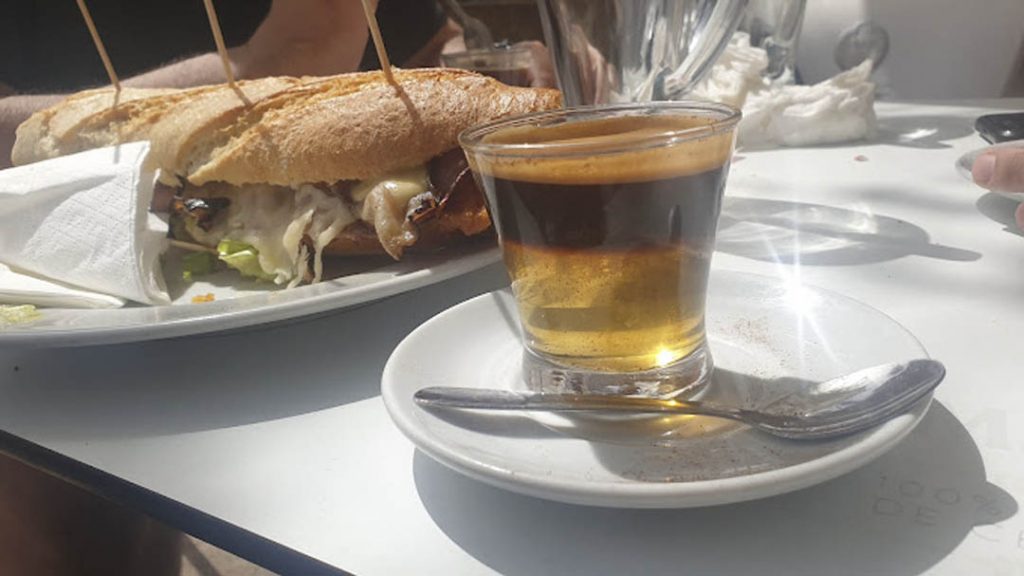
Gus // Asador El Pastoret de Nàquera
A cremaet is a signature valencian coffee served at the end of l’esmorzar. The name, meaning “burnt” in valencian, comes from its preparation. Rum, sugar, and spices (like cinnamon, lemon peel, and coffee beans) are heated until the alcohol nearly evaporates. Coffee is then poured on top, creating three distinct layers: burnt rum, coffee, and cream.
It’s like a liquid dessert—don’t leave Valencia without trying it!
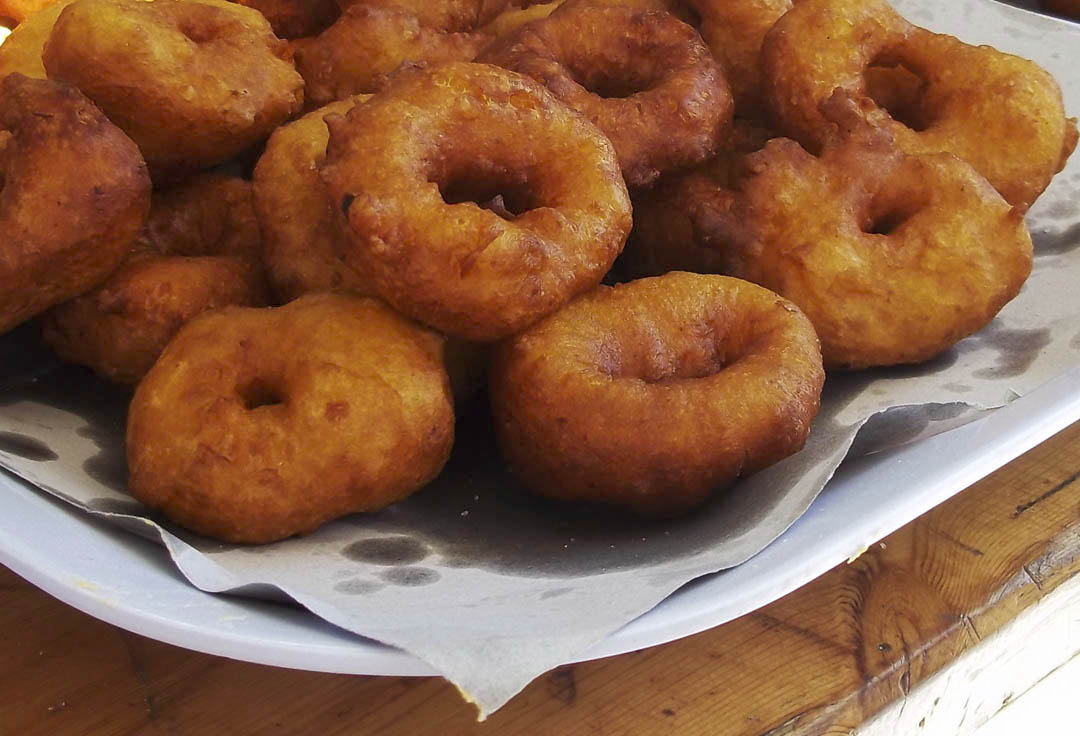
0 Comments